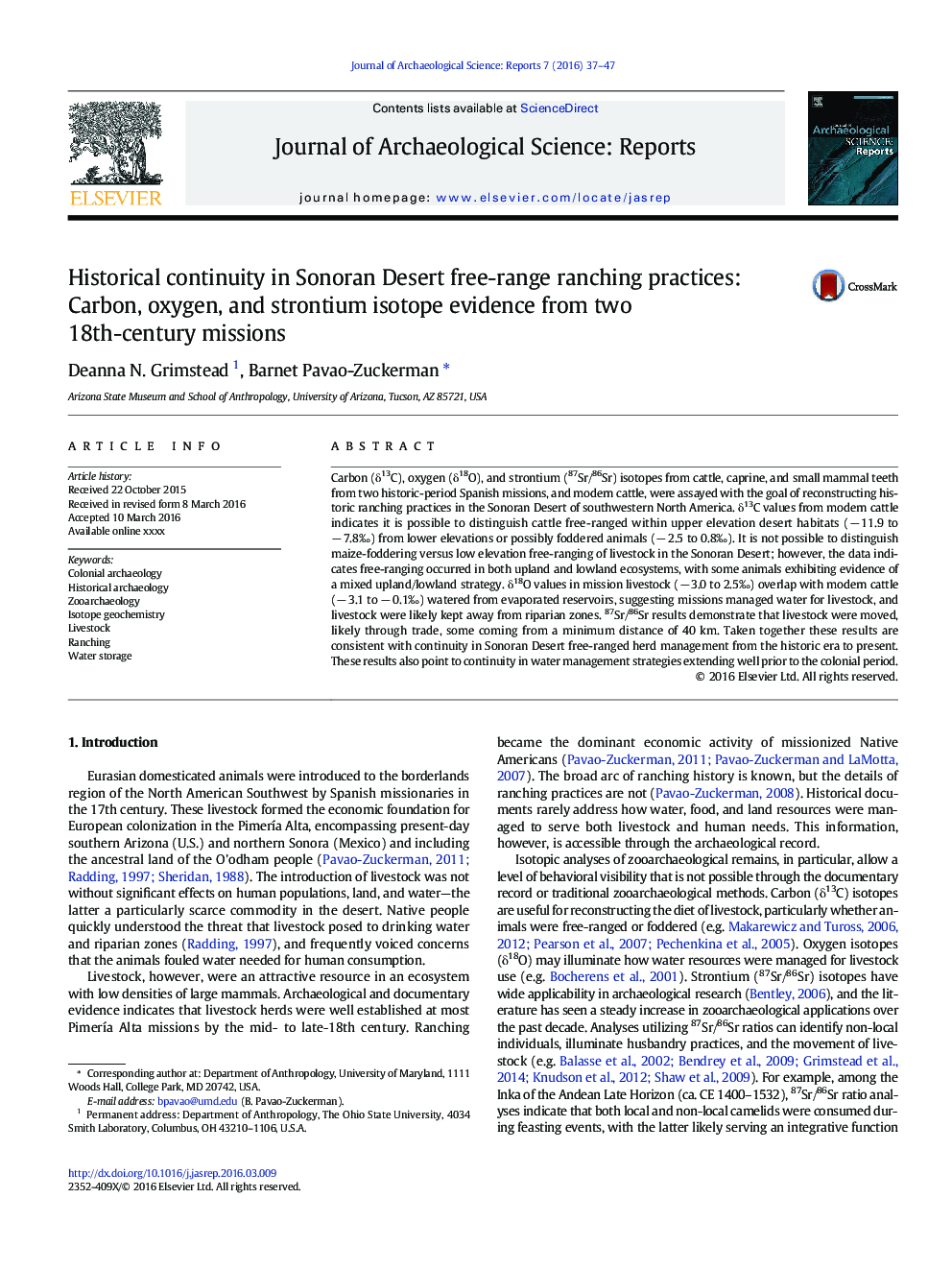| Article ID | Journal | Published Year | Pages | File Type |
|---|---|---|---|---|
| 7446112 | Journal of Archaeological Science: Reports | 2016 | 11 Pages |
Abstract
Carbon (δ13C), oxygen (δ18O), and strontium (87Sr/86Sr) isotopes from cattle, caprine, and small mammal teeth from two historic-period Spanish missions, and modern cattle, were assayed with the goal of reconstructing historic ranching practices in the Sonoran Desert of southwestern North America. δ13C values from modern cattle indicates it is possible to distinguish cattle free-ranged within upper elevation desert habitats (â 11.9 to â 7.8â°) from lower elevations or possibly foddered animals (â 2.5 to 0.8â°). It is not possible to distinguish maize-foddering versus low elevation free-ranging of livestock in the Sonoran Desert; however, the data indicates free-ranging occurred in both upland and lowland ecosystems, with some animals exhibiting evidence of a mixed upland/lowland strategy. δ18O values in mission livestock (â 3.0 to 2.5â°) overlap with modern cattle (â 3.1 to â 0.1â°) watered from evaporated reservoirs, suggesting missions managed water for livestock, and livestock were likely kept away from riparian zones. 87Sr/86Sr results demonstrate that livestock were moved, likely through trade, some coming from a minimum distance of 40 km. Taken together these results are consistent with continuity in Sonoran Desert free-ranged herd management from the historic era to present. These results also point to continuity in water management strategies extending well prior to the colonial period.
Related Topics
Social Sciences and Humanities
Arts and Humanities
History
Authors
Deanna N. Grimstead, Barnet Pavao-Zuckerman,
